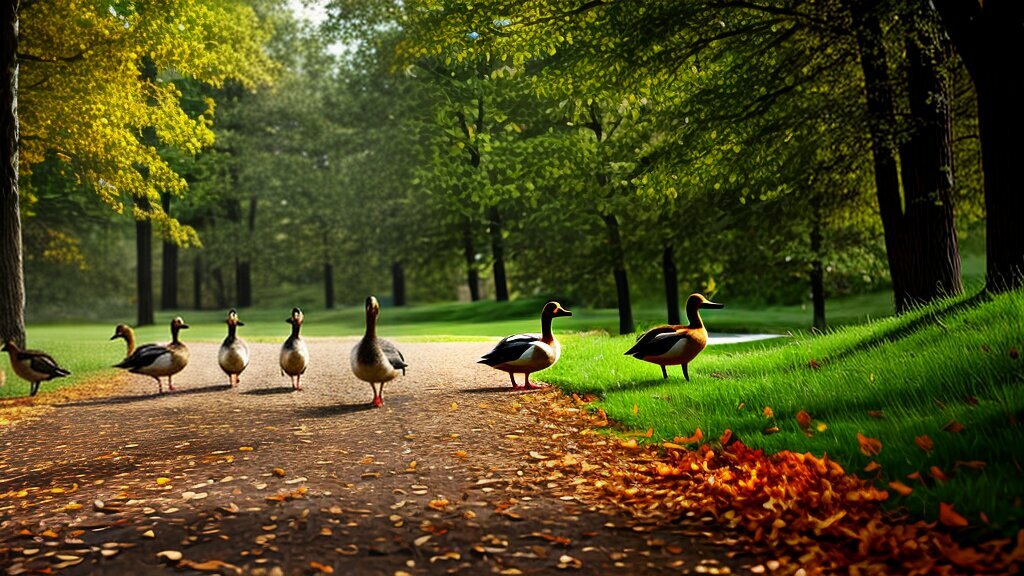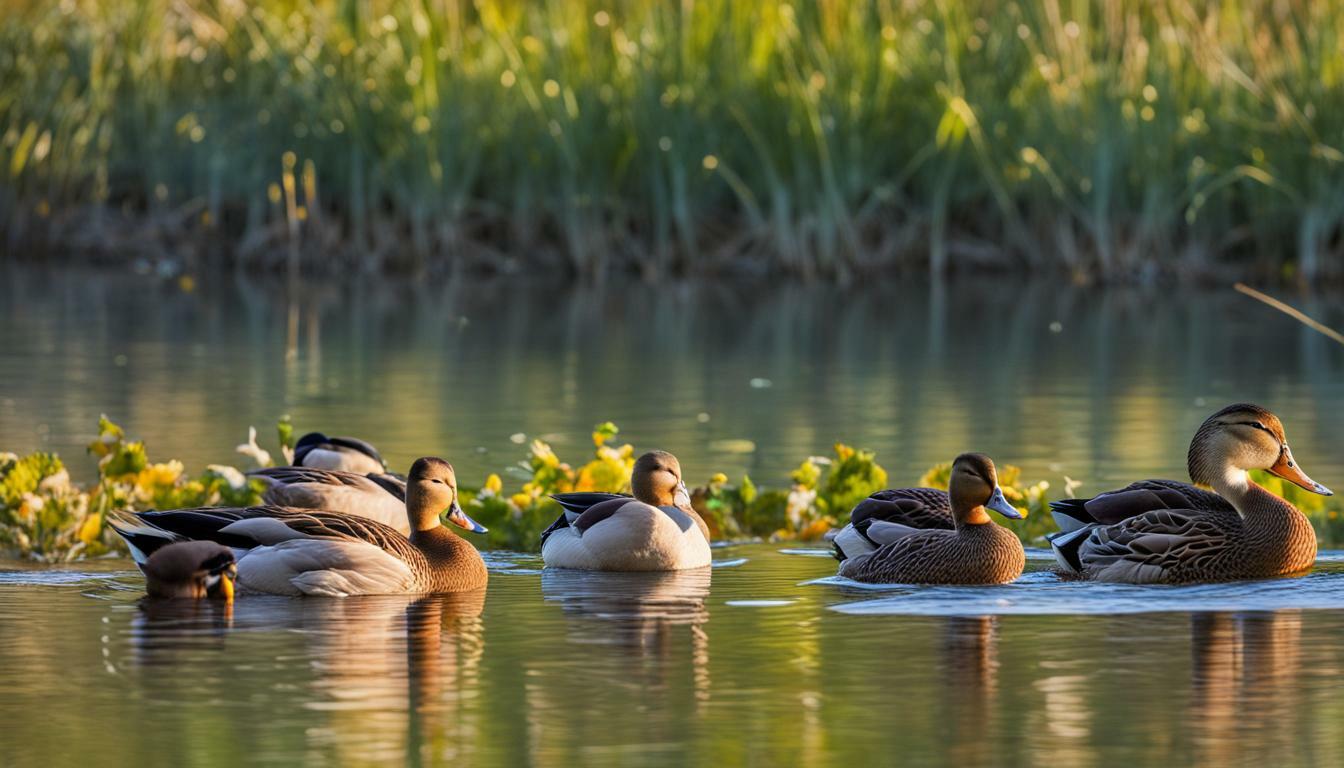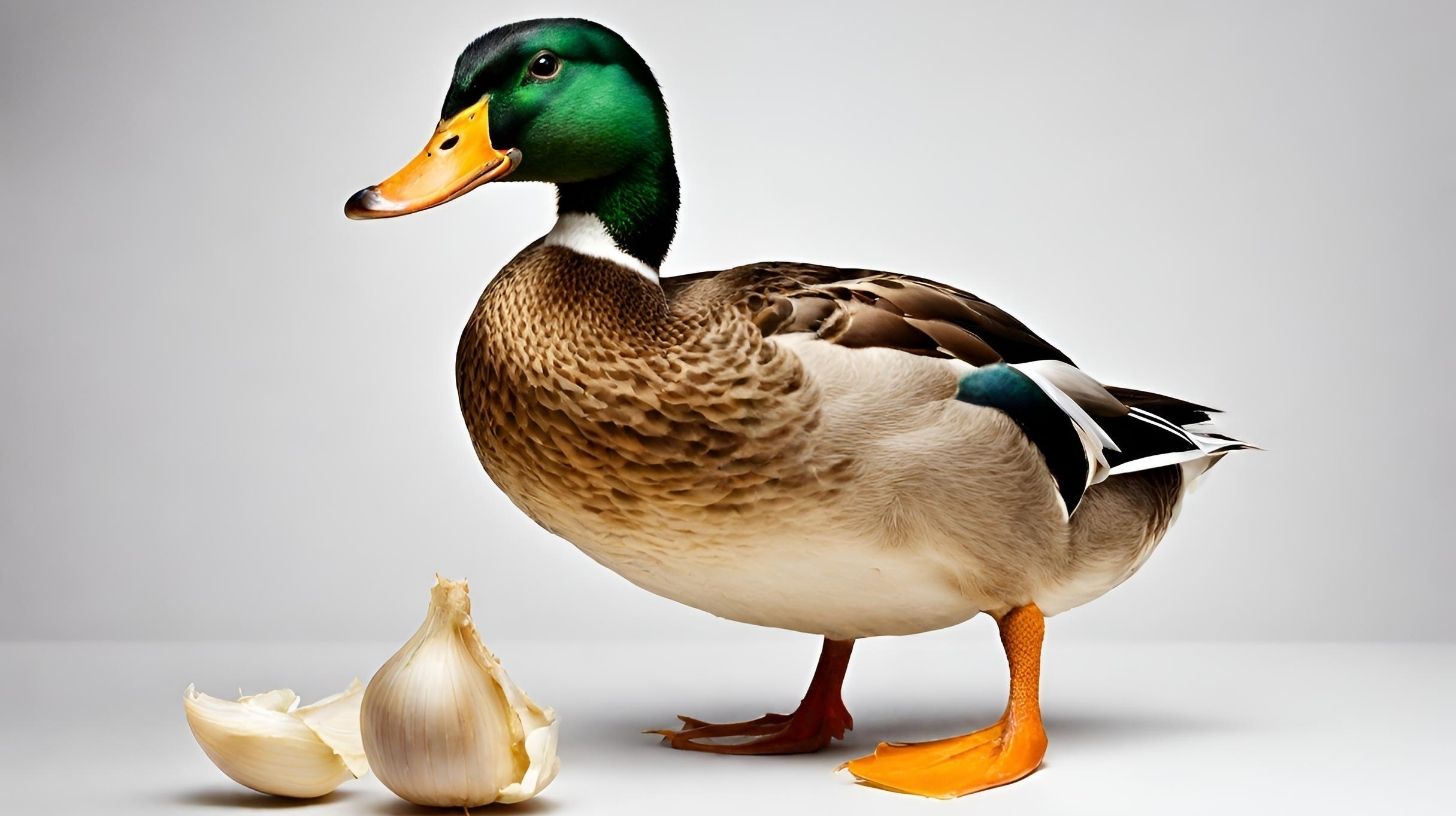Do Ducks Eat Acorns? Ducks’ Fall and Winter Food Sources

Table of content:
As the leaves start changing color and the temperatures begin to drop, many backyard bird enthusiasts notice an influx of ducks in the fall and winter months. Mallards, wood ducks, and other duck species seem drawn to yards and parks to feast on falling acorns from oak trees. This seasonal behavior raises the question: do ducks eat acorns?
An Overview of Ducks’ Diets
Ducks have an omnivorous diet, meaning they eat a variety of plant and animal matter. Their natural diet in the wild consists of aquatic plants, grasses, fruits, seeds, grains, green vegetation, and invertebrates like insects, small fish, amphibians, and mollusks.
During breeding season, ducks rely more on protein-rich foods like aquatic invertebrates to sustain egg production. Once ducklings hatch in the spring and summer, parents provide a diet of small insects, larvae and other high-protein foods to support duckling growth.
As fall approaches, ducks switch from breeding to molting old feathers and building up fat reserves for migration or winter. At this time, they transition their diet to take advantage of seasonal abundance. Fall foods like seeds, nuts, grains and some plant material give ducks an energy-dense food source to pack on weight.
Why Do Waterfowl Eat Acorns?
Acorns become a prime target for foraging ducks in the fall for several reasons:
Abundance
Oaks produce prodigious amounts of acorns during their mast years. A single mature oak can drop 10,000+ acorns over a season in a good mast crop. This abundance makes acorns easy to find and exploit compared to scarcer food items.
Nutritional content
Acorns offer an excellent nutritional package to meet ducks’ needs. They contain up to 18% fat, 6% protein and 68% carbohydrates by dry weight. The fat provides dense calories, while carbs supply energy and protein supports growth and maintenance.
Seasonal availability
Acorns become ripe and drop from oak trees starting in early fall, just when ducks need to pack on weight for winter. This seasonal pulse of abundant, nutritious acorns is perfectly timed with ducks’ migration and preparation for colder months.
Caching ability
Unlike other fall foods like fruits and berries, acorns store well underwater for months. Ducks exploit this by “caching” acorns in wetlands so they have an emergency winter food source when other foods are scarce.
What Duck Species Consume Acorns?
Many ducks opportunistically eat acorns to some degree, but some species rely on acorns more than others. Some ducks known to regularly consume acorns include:
- Mallards
- Wood ducks
- Black ducks
- Northern pintails
- Green-winged teal
- Ring-necked ducks
- Hooded mergansers
- Ruddy ducks
Mallards and wood ducks are particularly eager acorn-eaters across much of their range. Their preference for acorns makes sense given their habitat needs. Mallards and woodies frequent oak-studded wetlands, marshes and river systems throughout fall and winter – prime acorn hotspots.
In certain regions like California, acorns are a dietary staple for migratory waterfowl like northern pintails. Studies show pintails can meet up to 60% of their daily food intake from acorns during winter.
How Do Ducks Eat and Digest Acorns?
Ducks employ a few key adaptations to unlock the nutritional value of acorns:
Cracking Open Acorns
Ducks use their specialized bills like a nutcracker to open the outer shell and access the inner nutmeat. Mallards and other puddle ducks can break down even large acorn shells with the side-to-side motion of their broad bills. Smaller ducks like teal may have trouble opening large acorn caps at times.
Rapid Digestion
Acorns contain bitter tannins that deter many mammals from consuming them. But ducks have a digestive system adapted to rapidly pass and process foods like acorns high in tannins. The acorn shell fragments and tannins get excreted in the feces, while ducks absorb the nutritional fats, carbs and protein.
Caching Acorns
Ducks store excess acorns in muddy wetland bottoms for later retrieval in winter when food is scarce. Digging up cached acorns provides ducks with an important emergency food source during periods of frost or snow cover when it’s tougher to forage.
Do Mallards, Wood Ducks and Other Duck Species Compete for Acorns?
There can be some competition between duck species for prime acorn foraging locations. Since mallards and wood ducks favor acorns so strongly, they are most likely to compete for oak-rich feeding areas. But there may be some niche separation between these species.
Some key differences:
- Habitat – Mallards often feed more in open water than the wood ducks, who concentrating more on flooded forests and wooded swamps.
- Bill structure – The larger bills of mallards may give them an advantage cracking into large acorn caps, while wood ducks do better with small acorns.
- Caching behavior – Mallards cache acorns more aggressively than wood ducks in some regions. They may compete for ideal wetland caching sites.
- Dominance – Mallards are larger and more dominant than wood ducks, so can displace them from prime acorn sources. But wood ducks’ secretive nature helps them avoid competition.
Despite some overlap, there seems to be enough flexibility in habitat use and foraging behaviors to allow most ducks to share in the fall acorn bounty.
Do Ducks Help With Acorn Dispersal and Oak Growth?
While they greedily gobble up acorns in fall, ducks also play an important role in dispersing acorns and facilitating new oak growth.
Several helpful dispersal services ducks provide through their acorn feeding include:
- Caching acorns in wetland sediments away from parent trees
- Transporting acorns in their digestive system and depositing through feces
- Dislodging acorns from trees into waterways to float downstream
In all these ways, ducks help acorns disperse further than if they just dropped from the canopy. This gives oak seedlings a better chance to take root away from the parent tree and avoid competition.
Studies show mallards can disperse over 100 acorns per day through caching and feeding movements. That’s tens of thousands of acorns potentially dispersed per duck over fall!
So while ducks rely on oaks as a food source, they repay the favor by spreading acorn propagules far and wide. This not only helps new oaks sprout, but maintains healthy wetland ecosystems for future duck generations.
Conclusion
As the fall acorn supply dwindles and temperatures continue dropping, most ducks will migrate south or conserve energy through winter until spring greens return. But their hectic activity feasting on acorns in fall provides a burst of nutrition to power migration and winter survival.
Hopefully this provides a good overview of acorns’ importance in ducks’ seasonal dietary needs and behaviors. Let me know if you have any other questions!
Welcome. I’m Adreena Shanum, the proud owner of this website, and I am incredibly passionate about animals, especially poultry. I founded adreenapets.com as a labor of love, stemming from my desire to share my knowledge and experiences with poultry enthusiasts worldwide.




